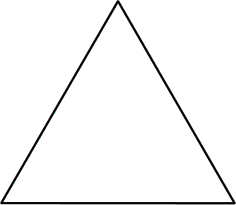27 JUL 2018 by ideonexus
 Norman Borlaug, Giga-Lifesaver
Norman Borlaug, Giga-Lifesaver
In the 1950s and ’60s, another giga-lifesaver, Norman Borlaug, outsmarted evolution to foment the Green Revolution in the developing world.21 Plants in nature invest a lot of energy and nutrients in woody stalks that raise their leaves and blossoms above the shade of neighboring weeds and of each other. Like fans at a rock concert, everyone stands up, but no one gets a better view. That’s the way evolution works: it myopically selects for individual advantage, not the greater good of the ...12 DEC 2017 by ideonexus
 Wheat Domesticated Homo Sapiens
Wheat Domesticated Homo Sapiens
Think for a moment about the Agricultural Revolution from the viewpoint of wheat. Ten thousand years ago wheat was just a wild grass, one of many, conFolksonomies: artificial selection
Folksonomies: artificial selection
09 NOV 2015 by ideonexus
 Physiological Decline in the Body When You Stop Exercising
Physiological Decline in the Body When You Stop Exercising
...regular endurance exercise leads to four major consequences:
Increased ability of the heart to eject blood
increased ability of the blood vessels to send blood to where blood is needed
Increased number of capillaries (the vessels that deliver oxygen and ‘food’ to the muscles)
increased size and the number of mitochondria (the “power plants” of the cells).
All these changes lead to the more efficient use of oxygen, as well as nutrients.
[...]
Pino considers a person who can run...04 APR 2015 by ideonexus
 Teaching as Gardening
Teaching as Gardening
If a teacher is a gardener, than a student is the seed. The classroom serves as the greenhouse creating a warm, safe environment for growth. An administrator is the soil, serving as a strong nutrient base for the seed to root. The parents are the water, providing live and maintaining it. When the water/parent is not plentiful, the seed will suffer. The curriculum is the sun. It shines knowledge to ensure growth. The aspects of the curriculum that some students do not make sense of can be cons...19 FEB 2015 by ideonexus
 Growing a Forest Rapidly
Growing a Forest Rapidly
1. First, you start with soil. We identify what nutrition the soil lacks.
2. Then we identify what species we should be growing in this soil, depending on climate.
3. We then identify locally abundant biomass available in that region to give the soil whatever nourishment it needs. This is typically an agricultural or industrial byproduct — like chicken manure or press mud, a byproduct of sugar production — but it can be almost anything. We’ve made a rule that it must come from...05 JUN 2012 by ideonexus
 The Scientific Crime of Cremation
The Scientific Crime of Cremation
Nothing is more detestable to the physical anthropologist than... [the] wretched habit of cremating the dead. It involves not only a prodigal waste of costly fuel and excellent fertilizer, but also the complete destruction of physical historical data. On the other hand, the custom of embalming and mummification is most praiseworthy and highly to be recommended. Folksonomies: anthropology cremation
Folksonomies: anthropology cremation
It robs nature of the nutrients and the anthropologist of evidence.




